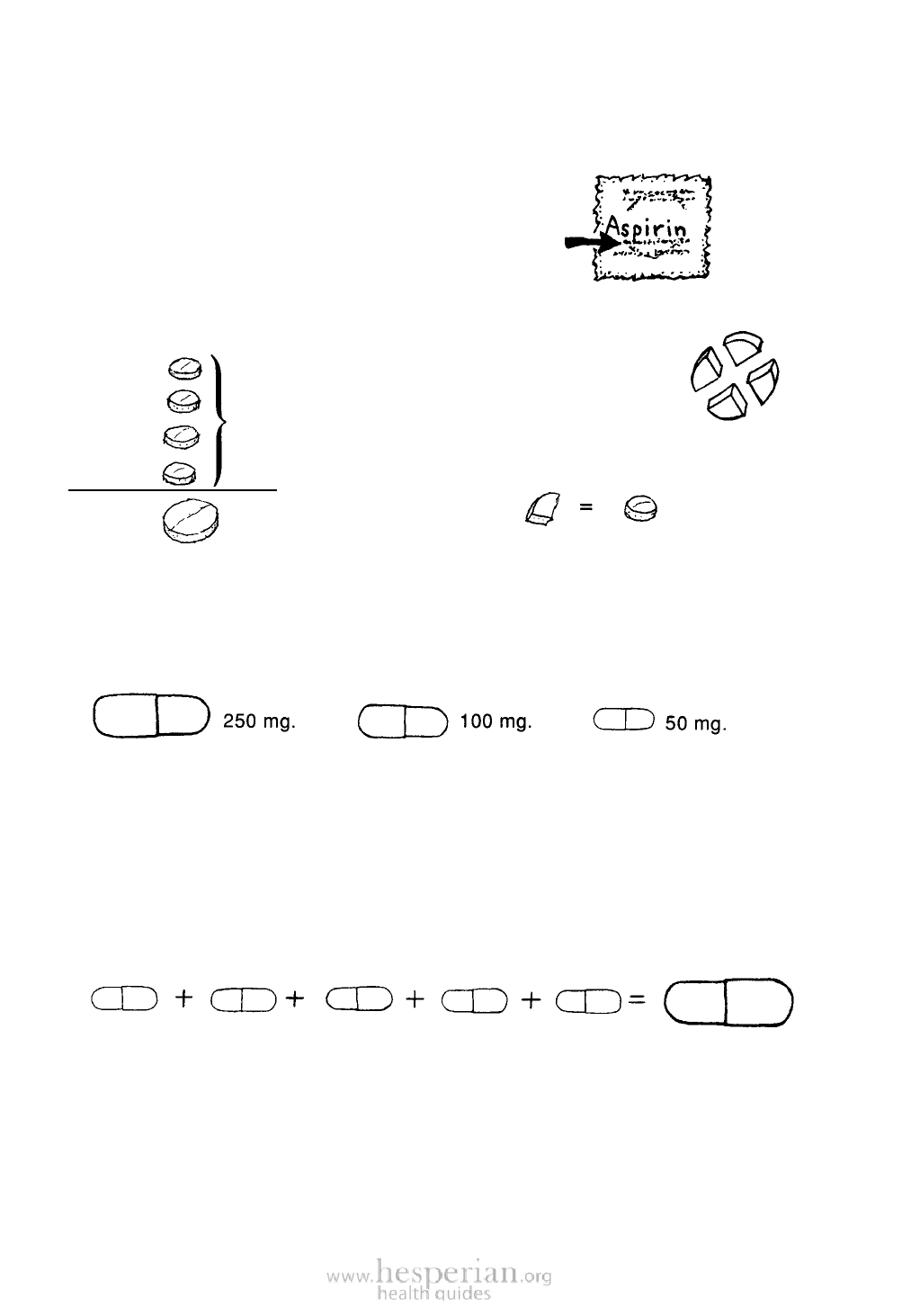
60 Where There Is No Doctor 2011
Many times it is important to know how many grams or milligrams are in a
medicine.
For example, if you want to give a small piece of adult aspirin to a child, instead of
baby aspirin, but you do not know how big a piece to give...
read the small print on the labels of each.
It says: aspirin: acetylsalicylic acid .3 g.
(acetylsalicylic acid = aspirin)
.3 g. = 300 mg. and .075 g. = 75 mg. So, you can see that one adult aspirin
weighs 4 times as much as one baby aspirin.
75 mg.
75 mg.
75 mg.
75 mg.
4 baby aspirins
add up to
If you cut the adult aspirin
into 4 equal pieces,
each quarter = one baby aspirin
300 mg.
1 regular aspirin
So if you cut an adult aspirin into 4 pieces, you can give the child 1 piece in place of
a baby aspirin. Both are equal, and the piece of adult aspirin costs less.
CAUTION: Many medicines, especially the antibiotics, come in different weights and
sizes. For example, tetracycline may come in 3 sizes of capsules:
Be careful to only give medicine in the recommended amounts. It is very
important to check how many grams or milligrams the medicine contains.
For example: if the prescription says: Take tetracycline, 1 capsule of 250 mg. 4 times a
day, and you have only 50 mg. capsules, you have to take five 50 mg. capsules 4 times
a day (20 capsules a day).
50 mg. + 50 mg. + 50 mg. + 50 mg. + 50 mg. =
250 mg.
MEASURING PENICILLIN
Penicillin is often measured in units.
U. = unit
1,600,000 u. = 1 g. or 1,000 mg.
Many forms of penicillin (pills and injections) come in doses of 400,000 U.
400,000 U. = 250 mg.